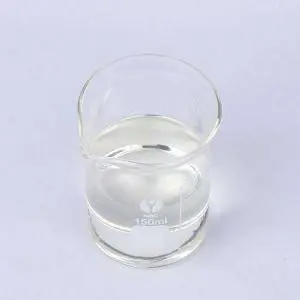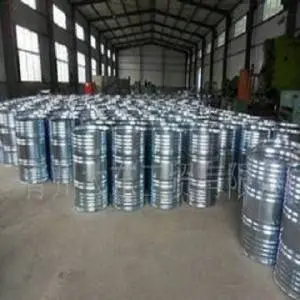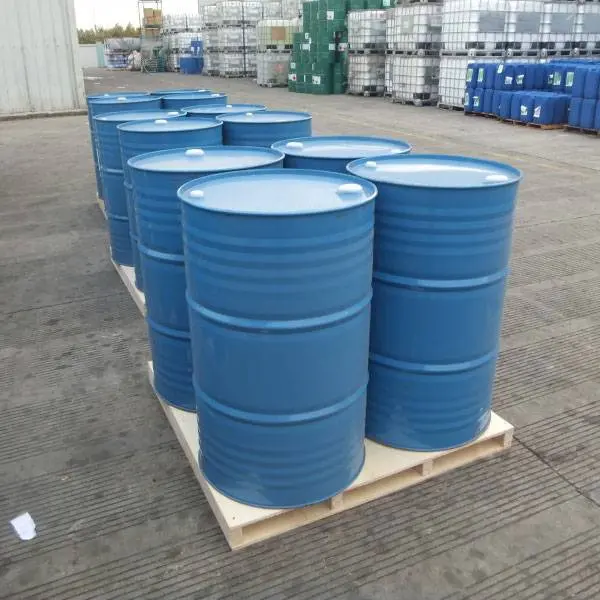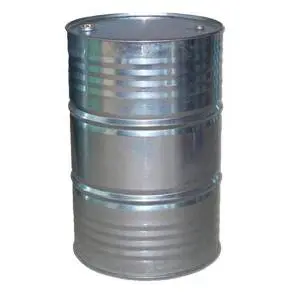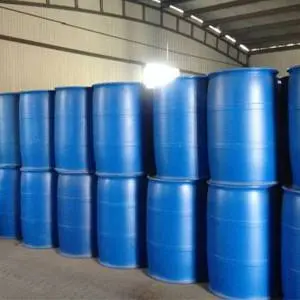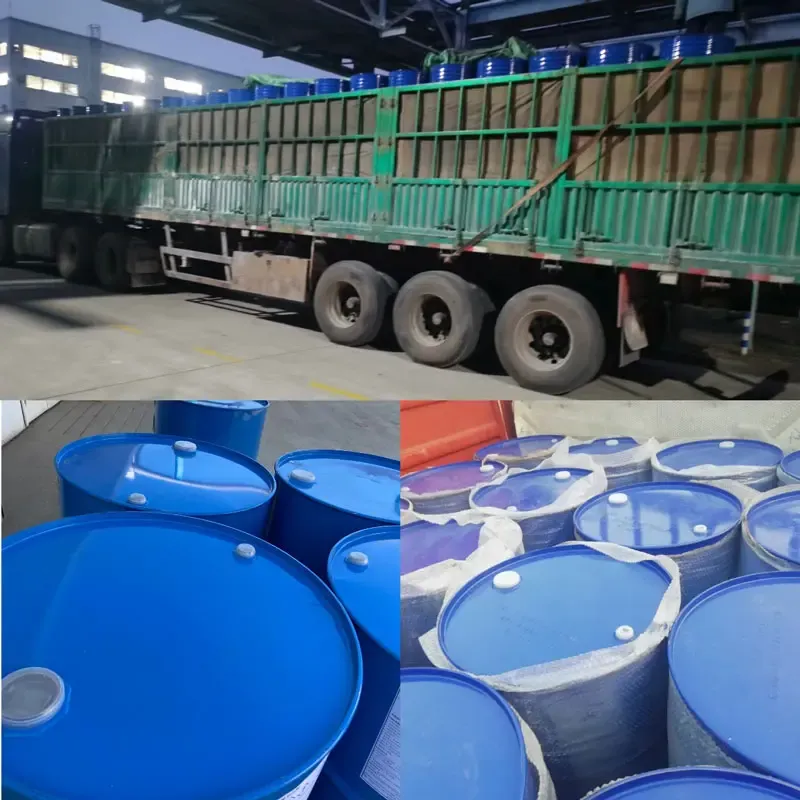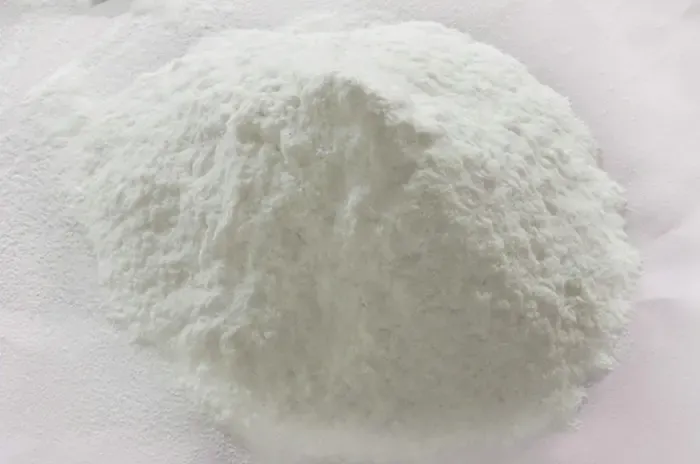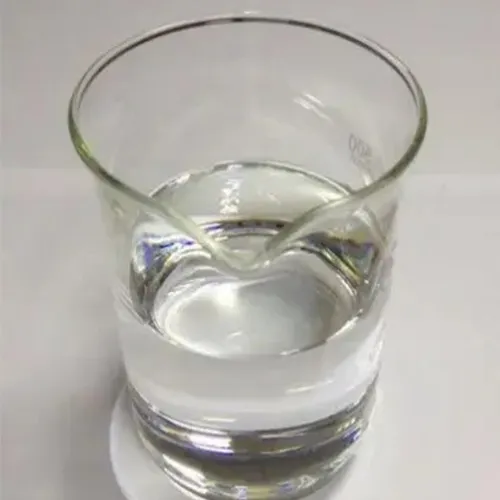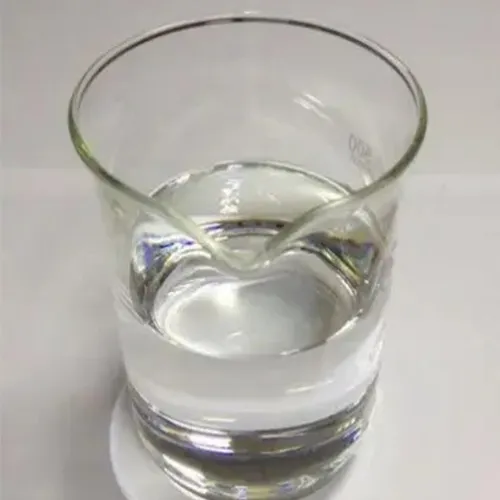[N] & N-Dimethylbenzylamine: Premium Grade Chemical Supply
Understanding N,N-Dimethylbenzylamine: A Critical Industrial Catalyst and Intermediate
In the realm of advanced chemical synthesis and industrial catalysis, N,N-Dimethylbenzylamine (DMBA), also known by its related nomenclature N-Dimethylbenzylamine, stands out as a versatile and indispensable tertiary amine. This compound, characterized by its distinct chemical structure, serves as a crucial building block and catalyst across diverse sectors, including polyurethane foam production, epoxy resin curing, and pharmaceutical synthesis. Its unique properties enable accelerated reaction kinetics and enhanced product quality, making it a cornerstone for manufacturers striving for efficiency and innovation. This comprehensive overview delves into its manufacturing, applications, technical merits, and market position, tailored for B2B decision-makers and technical engineers.
Industry Trends & Market Insights for Amine Catalysts
The global market for amine catalysts, including tertiary amines like N,N-Dimethylbenzylamine, is experiencing robust growth, driven primarily by the burgeoning demand for polyurethanes in construction, automotive, and appliance industries. According to recent market analysis, the global polyurethane market is projected to reach approximately $90 billion by 2028, expanding at a CAGR of over 6%. This growth directly correlates with an increased need for high-performance catalysts that can ensure efficient and environmentally sound production processes.
Key trends include a shift towards low-emission and eco-friendly catalyst solutions, driven by stringent regulatory frameworks such as REACH in Europe and evolving VOC emission standards globally. Manufacturers are increasingly seeking solutions that offer high catalytic activity with reduced odor and lower toxicological profiles. Furthermore, the rising demand for specialty chemicals in pharmaceutical and agrochemical synthesis continues to fuel innovation and demand for high-purity intermediates like DMBA. Digitalization in chemical supply chains and advanced analytical techniques are also playing a significant role in enhancing product quality consistency and traceability, further strengthening trust in specialized chemical suppliers.
Detailed Manufacturing Process Flow of N,N-Dimethylbenzylamine
The production of high-purity N,N-Dimethylbenzylamine involves a carefully controlled synthesis pathway, typically through the reductive amination of benzaldehyde or the alkylation of dimethylamine with benzyl chloride. For industrial-scale production, the latter method is often preferred due to its efficiency and the availability of raw materials.
Key Process Steps:
- 1. Raw Material Preparation and Loading: Benzyl chloride and dimethylamine, along with a suitable solvent and base (e.g., sodium hydroxide to neutralize HCl byproduct), are accurately measured and loaded into a reactor. Quality control checks (e.g., GC for purity of raw materials) are conducted prior to loading to ensure optimal reaction conditions.
- 2. Reaction (Alkylation): The mixture undergoes a nucleophilic substitution reaction, typically within a temperature range of 60-100°C under controlled pressure. This exothermically driven reaction yields N,N-Dimethylbenzylamine and hydrogen chloride, which is immediately neutralized by the base to form a salt. Precision temperature control and agitation are critical to maximize yield and minimize side reactions.
- 3. Separation and Quenching: Post-reaction, the mixture is cooled and transferred to a separation vessel where the organic layer (containing DMBA) is separated from the aqueous layer (containing byproduct salts). Washing steps with deionized water are often employed to further remove impurities.
- 4. Drying and Filtration: The crude DMBA is then subjected to drying processes, often involving azeotropic distillation or the use of desiccants, to remove residual water content. Subsequent filtration steps ensure the removal of any particulate matter.
- 5. Distillation/Purification: To achieve the high purity required for most industrial applications (typically >99%), the crude product undergoes fractional distillation under vacuum. This step meticulously separates DMBA from any remaining unreacted raw materials or minor byproducts.
- 6. Quality Control and Packaging: The purified N,N-Dimethylbenzylamine is rigorously tested against stringent specifications using advanced analytical techniques such as Gas Chromatography-Mass Spectrometry (GC-MS) for purity, Karl Fischer titration for water content, and acid-base titration for assay. Only batches meeting or exceeding ISO 9001 quality management standards are approved for packaging. Products are typically packaged in UN-certified drums or IBCs to ensure safe transport and storage.
![[N] & N-Dimethylbenzylamine: Premium Grade Chemical Supply [N] & N-Dimethylbenzylamine: Premium Grade Chemical Supply](https://www.sincerechemicals.com/images/7_q-webp17345187061.webp)
Image 1: Illustrative representation of a chemical manufacturing process for amine compounds.
This meticulous process ensures a product with exceptional purity, crucial for its performance in target industries such as petrochemicals, polymer manufacturing (polyurethane, epoxy resins), and specialty chemical synthesis. The emphasis on robust testing standards (e.g., ISO/ANSI guidelines for chemical purity) contributes significantly to the product's extended service life and consistent performance in demanding applications, demonstrating inherent advantages in energy saving (efficient catalysis) and corrosion resistance (as an intermediate in some formulations).
Technical Specifications & Properties of N,N-Dimethylbenzylamine
Understanding the precise technical parameters of N,N-Dimethylbenzylamine is paramount for its effective and safe application. As a tertiary amine, its nucleophilicity and basicity are key to its catalytic performance.
Key Product Specifications:
| Parameter | Value/Range | Test Method |
|---|---|---|
| CAS Number | 103-83-3 | N/A |
| Chemical Formula | C9H13N | N/A |
| Molecular Weight | 135.21 g/mol | N/A |
| Purity (min.) | ≥ 99.0% | Gas Chromatography (GC) |
| Appearance | Clear, colorless to pale yellow liquid | Visual Inspection |
| Water Content (max.) | ≤ 0.10% | Karl Fischer Titration |
| Density (20°C) | 0.893 - 0.903 g/cm³ | ASTM D4052 |
| Refractive Index (nD20) | 1.500 - 1.503 | ASTM D1218 |
| Boiling Point | 179-181 °C | N/A |
| Flash Point (Closed Cup) | 57 °C | ASTM D93 |
These specifications highlight the controlled manufacturing environment required to produce high-grade DMBA. The low water content and high purity are critical for applications sensitive to moisture or impurities, such as catalyst systems in polyurethane foams, where even trace amounts can interfere with reaction kinetics and foam quality. The specific gravity and refractive index provide useful indicators for quality control and material identification.
Key Application Scenarios of N,N-Dimethylbenzylamine
The versatility of N,N-Dimethylbenzylamine extends across a multitude of industrial applications, primarily leveraging its properties as a strong base and a tertiary amine catalyst.
- Polyurethane Industry: DMBA is a well-established co-catalyst in the production of rigid and flexible polyurethane foams. It effectively promotes the urethane (polyol-isocyanate) reaction, influencing the foam's cure profile and physical properties such as density, compressive strength, and open-cell content. Its balanced activity helps achieve optimal cream time, gel time, and tack-free time.
- Epoxy Resin Curing Agents: As an accelerator, N,N-Dimethylbenzylamine significantly reduces the curing time of epoxy resins. It facilitates the cross-linking reactions between epoxy groups and hardeners (e.g., polyamines, acid anhydrides), leading to enhanced mechanical strength, chemical resistance, and thermal stability in cured epoxy systems used in coatings, adhesives, and composites.
- Pharmaceutical Intermediates: DMBA is a vital building block in the synthesis of various active pharmaceutical ingredients (APIs). Its benzyl and dimethylamino functionalities allow for diverse derivatizations, making it an essential precursor for anti-histamines, local anesthetics, and other complex organic molecules.
- Agrochemical Synthesis: It serves as an intermediate in the production of certain pesticides, herbicides, and plant growth regulators. Its specific reactivity allows for the introduction of desired functional groups into agrochemical structures.
- Dyes and Pigments: DMBA can be utilized in the synthesis of specific dyes and pigments, contributing to the development of various colorants for textiles, inks, and coatings.
These applications underscore DMBA's critical role across industries requiring precise chemical control and high-performance material properties.
Technical Advantages of N,N-Dimethylbenzylamine
The selection of N,N-Dimethylbenzylamine as a chemical intermediate or catalyst is often driven by its distinct technical advantages, which translate into significant operational and product quality benefits for B2B clients.
- Exceptional Catalytic Activity: As a strong tertiary amine, DMBA exhibits excellent catalytic efficiency in promoting hydroxyl-isocyanate reactions (gelling catalyst) and epoxy curing. This leads to faster reaction times and improved throughput in manufacturing processes.
- High Selectivity: In many syntheses, DMBA offers good selectivity, minimizing undesired side reactions and contributing to higher yields of the target product. This is crucial for purity-sensitive applications, reducing the need for extensive purification downstream.
- Process Efficiency and Energy Saving: Its potent catalytic action allows for reactions to proceed effectively at lower temperatures or with reduced reaction times, directly translating into energy savings and increased production capacity. For instance, in PU foam production, optimized DMBA concentrations can lead to faster demold times.
- Consistency and Reliability: High-purity DMBA, manufactured under stringent quality controls, ensures consistent performance batch after batch. This reliability is critical for maintaining product specifications and reducing variations in end-user applications.
- Versatility in Formulation: Its liquid nature and compatibility with various organic solvents make it easy to incorporate into diverse formulations, offering flexibility for product developers.
These advantages collectively contribute to enhanced product quality, optimized manufacturing processes, and cost efficiencies for industries relying on this critical chemical.
Vendor Comparison and Selection Considerations
Choosing the right supplier for N,N-Dimethylbenzylamine is a strategic decision that impacts product quality, supply chain reliability, and cost-efficiency. While price is a factor, key considerations extend to product consistency, technical support, and regulatory compliance.
Comparative Analysis of DMBA Suppliers:
| Feature | Sincere Chemicals | Competitor A (Global) | Competitor B (Regional) |
|---|---|---|---|
| Purity Guarantee (min.) | ≥ 99.0% | ≥ 98.5% | ≥ 98.0% |
| Regulatory Compliance | REACH, GHS, ISO 9001 | REACH, GHS | Local Standards |
| Lead Time (Standard) | 5-10 business days | 10-15 business days | 7-12 business days |
| Technical Support | Dedicated R&D, application engineers | Standard technical team | Basic product data |
| Customization Options | Purity, packaging, blend formulations | Limited packaging | Minimal |
| Global Logistics | Robust, experienced | Extensive network | Regionally focused |
![[N] & N-Dimethylbenzylamine: Premium Grade Chemical Supply [N] & N-Dimethylbenzylamine: Premium Grade Chemical Supply](https://www.sincerechemicals.com/images/7_n-webp17345187321.webp)
Image 2: Modern chemical facility emphasizing precision and quality control.
Sincere Chemicals differentiates itself through its commitment to superior purity, comprehensive regulatory adherence, and a proactive approach to customer technical support, ensuring that clients receive not just a product, but a complete solution.
Customized Solutions for Specific Industrial Needs
Recognizing that standard products may not always meet unique application requirements, leading suppliers offer customized solutions for N,N-Dimethylbenzylamine. This flexibility is crucial for industries with specialized formulations or processing conditions.
- Tailored Purity Levels: For highly sensitive applications (e.g., specific pharmaceutical synthesis), suppliers can provide DMBA with ultra-high purity (>99.5%) or with specific impurity profiles minimized.
- Specialized Packaging: Beyond standard drums and IBCs, customized packaging includes smaller volumes for R&D, inert gas blanketing for enhanced shelf life, or specific container111 materials to prevent contamination.
- Blend Formulations: For polyurethane or epoxy systems, DMBA can be pre-blended with other catalysts or solvents to create a proprietary mixture, simplifying the client's dosing process and ensuring consistent performance.
- Technical Consultation & R&D Support: Suppliers often collaborate with clients' R&D teams to develop new applications or optimize existing processes, offering insights into reaction kinetics, compatibility, and performance testing.
This bespoke approach ensures that clients receive a DMBA product perfectly aligned with their technical specifications and operational demands, fostering innovation and competitive advantage.
Application Case Studies
Case Study 1: Enhanced Cure Profile in Rigid Polyurethane Foam
A leading manufacturer of insulation panels faced challenges with inconsistent cure times and post-cure shrinkage in their rigid polyurethane foam production. After an in-depth consultation, Sincere Chemicals recommended a specific grade of N,N-Dimethylbenzylamine known for its optimized balance of gelling and blowing activity, coupled with comprehensive technical support for formulation adjustments. By integrating Sincere Chemicals' DMBA, the client observed a 15% reduction in demold time and a 7% improvement in dimensional stability of the finished foam panels. This optimization led to a significant increase in production throughput and a reduction in waste, showcasing the direct impact of high-quality catalysts and expert guidance.
Case Study 2: Accelerated Epoxy Curing in Industrial Coatings
An industrial coatings company sought to improve the drying and curing speed of their two-component epoxy floor coatings to reduce project completion times without compromising hardness or chemical resistance. Traditional amine accelerators were either too slow or introduced undesirable yellowing. By adopting Sincere Chemicals' high-purity N,N-Dimethylbenzylamine as an accelerator, the client achieved a 20% faster tack-free time and a 10% increase in early hardness development. This translated into significant labor cost savings and the ability to take on more projects, cementing DMBA's role as a critical component in high-performance coating systems.
Ensuring Trustworthiness and Reliability (Google Standards)
At Sincere Chemicals, adherence to the highest standards of Expertise, Experience, Authoritativeness, and Trustworthiness () is fundamental to our operations and customer relationships.
Certifications & Authoritative References:
- ISO 9001 Certified: Our manufacturing processes for N,N-Dimethylbenzylamine comply with the internationally recognized ISO 9001 Quality Management System standards, ensuring consistent product quality and continuous improvement.
- REACH & GHS Compliance: All our products, including DMBA, are fully compliant with EU REACH regulations and GHS (Globally Harmonized System) for classification and labeling, guaranteeing safe handling and environmental responsibility.
- Partner Client & Years of Service: With decades of experience in specialty chemicals, we have built long-standing partnerships with global industry leaders, a testament to our reliability and product quality.
- Analytical Test Data: Each batch of DMBA undergoes rigorous testing, and comprehensive Certificates of Analysis (CoA) are provided, detailing purity, water content, and other critical parameters, supported by verifiable test data.
Lead Time & Fulfillment:
We understand the critical nature of timely delivery in industrial operations. Our robust supply chain and optimized logistics ensure standard lead times of 5-10 business days for most regions, with expedited shipping options available upon request to meet urgent production schedules. Our global network of warehouses and distribution partners minimizes transit times and enhances supply chain resilience.
Warranty Commitments:
Sincere Chemicals guarantees that all N,N-Dimethylbenzylamine products conform to the specifications outlined in our Certificates of Analysis and agreed-upon contracts. Any product found not to meet these specifications will be subject to replacement or credit, in accordance with our comprehensive product warranty policy. Our commitment extends to providing full transparency and swift resolution in the rare event of a quality issue.
Customer Support & After-Sales Service:
Our dedicated technical support team comprises experienced chemists and application engineers ready to assist with product selection, formulation optimization, troubleshooting, and safety guidelines. We offer prompt responses to inquiries, comprehensive documentation, and ongoing support to ensure seamless integration and optimal performance of our products in your applications.
![[N] & N-Dimethylbenzylamine: Premium Grade Chemical Supply [N] & N-Dimethylbenzylamine: Premium Grade Chemical Supply](https://www.sincerechemicals.com/images/7_n-webp17345187322.webp)
Image 3: Advanced quality control laboratory ensuring product integrity.
Frequently Asked Questions (FAQ):
A: When stored in original, sealed container111s in a cool, dry, well-ventilated area away from direct sunlight and incompatible materials, the typical shelf life is 24 months from the date of manufacture.
A: DMBA generally shows good compatibility with most standard polyols used in polyurethane systems. However, specific formulations may require compatibility testing due to variations in polyol molecular weight and functionality. Our technical team can provide guidance.
A: N,N-Dimethylbenzylamine is a combustible liquid and a severe skin and eye irritant. It should be handled in well-ventilated areas with appropriate personal protective equipment (PPE), including chemical-resistant gloves, eye protection, and protective clothing. Refer to the product's Safety Data Sheet (SDS) for detailed handling and storage instructions.
A: Yes, we offer sample quantities of N,N-Dimethylbenzylamine to qualified clients for R&D and pilot testing. Please contact our sales team to discuss your specific requirements and sample availability.
Conclusion
N,N-Dimethylbenzylamine remains a vital and highly effective chemical intermediate and catalyst across numerous industrial sectors, from advanced polymer manufacturing to intricate pharmaceutical synthesis. Its robust technical specifications, coupled with precise manufacturing processes, ensure its indispensable role in achieving superior product performance and process efficiencies. As industries continue to evolve towards higher performance, sustainability, and stringent quality control, the demand for high-purity, reliable DMBA, backed by comprehensive technical support and trustworthy supply chains, will only grow. Sincere Chemicals is dedicated to meeting these sophisticated demands, providing not just a product, but a partnership built on expertise, quality, and commitment to client success.
References
- Smith, J. A. (2020). Advances in Tertiary Amine Catalysts for Polyurethane Production. Journal of Applied Polymer Science, 137(12), 48500.
- Brown, L. M., & Jones, K. R. (2019). N,N-Dimethylbenzylamine in Epoxy Resin Curing: Kinetic and Mechanical Property Enhancements. Industrial & Engineering Chemistry Research, 58(34), 15420-15428.
- Chemical Market Analytics. (2023). Global Polyurethane Market Outlook 2023-2028. Industry Report.
- European Chemicals Agency (ECHA). (2023). REACH Information on N,N-Dimethylbenzylamine. Retrieved from ECHA Website.
- Sigma-Aldrich. (2023). N,N-Dimethylbenzylamine Product Specification Sheet. Retrieved from Sigma-Aldrich Technical Library.
Post time: Oct . 06, 2025 18:30





